Pioneer Blu-ray Movie
HomePioneer Blu-ray Movie 
PionérMagnolia Pictures | 2013 | 111 min | Rated R | Mar 10, 2015
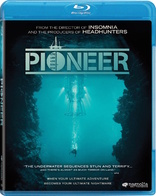
Movie rating
7 | / 10 |
Blu-ray rating
| Users | 0.0 | |
| Reviewer | 4.0 | |
| Overall | 4.0 |
Overview
Pioneer (2013)
In the early 80's, at the beginning of the Norwegian Oil Boom, the authorities aim to bring oil ashore from the North Sea through a pipeline from depths of 500 meters. A professional diver, Petter, obsessed with reaching the bottom of the Norwegian Sea, accepts the world's most dangerous mission. But a tragic accident changes everything. Petter is sent on a perilous journey where he loses sight of who's pulling the strings and gradually realizes that the risks to his life aren't just from the forces of nature.
Starring: Wes Bentley, Aksel Hennie, Stephen Lang, Stephanie Sigman, Jonathan LaPagliaDirector: Erik Skjoldbjærg
| Foreign | Uncertain |
| Thriller | Uncertain |
| Drama | Uncertain |
Specifications
Video
Video codec: MPEG-4 AVC
Video resolution: 1080p
Aspect ratio: 2.35:1
Original aspect ratio: 2.39:1
Audio
Norwegian: DTS-HD Master Audio 5.1
48kHz, 24-bit
Subtitles
English, English SDH, Spanish
Discs
25GB Blu-ray Disc
Single disc (1 BD)
Playback
Region A (B, C untested)
Review
Rating summary
| Movie | 4.0 | |
| Video | 4.0 | |
| Audio | 4.5 | |
| Extras | 3.0 | |
| Overall | 4.0 |
Pioneer Blu-ray Movie Review
Three Days of the Seagull
Reviewed by Michael Reuben March 16, 2015Norwegian filmmaker Erik Skjoldbjærg, who wrote and directed Insomnia (later remade in English by Christopher Nolan), grew up on American thrillers of the Seventies. He has said that films like Chinatown, The Conversation and All the President's Men have shaped his aesthetic and inspired his approach to storytelling. Skjoldbjærg's 2013 release, Pioneer, which he co-wrote with four other writers, is set during the decade immediately after those films, but it shares their approach of focusing on a lone protagonist (or a pair in the case of All the President's Men) who finds himself increasingly at risk in a world where the stakes are huge and no one can be trusted. Paranoia becomes the new definition of sanity. Pioneer's script drew from extensive research on Norway's oil boom of the Eighties, when the discovery of massive petroleum reserves under the North Sea led to construction of an underwater pipeline that transformed the land of fjords into one of Europe's wealthiest countries. As Balzac famously observed, behind every great fortune lies a great crime, and the vast sums to be made from these new-found energy sources triggered both fierce competition and the potential for malfeasance. Skjoldbjærg has said that the script for Pioneer had to be carefully vetted because of litigation still pending over events that inspired some elements of the story. Still, Pioneer is not a history lesson. It is a gripping and elegantly constructed thriller about an individual—an ambitious diver—who finds that he's merely a pawn in a much larger game of economics and geopolitics. Like Robert Redford's CIA analyst who "just reads books" in 3 Days of the Condor, he's suddenly stepped into another world, and it's one where people like him are expendable.
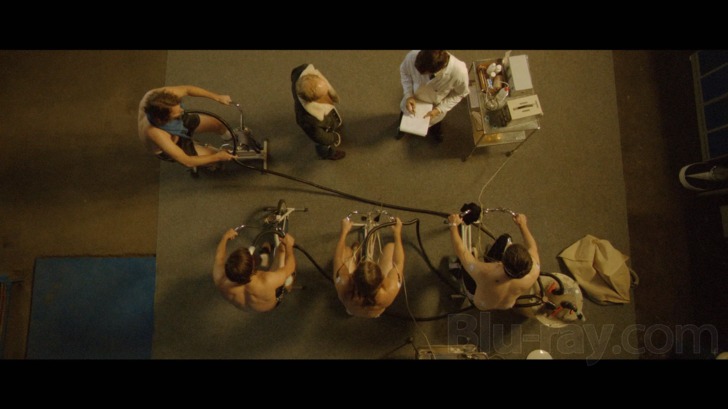
Petter Jensen (Aksel Hennie, Headhunters) is a skilled and experienced diver training with a team composed of Americans and Norwegians to determine whether it is possible for a construction crew to function at a depth of 500 meters. The initial "verification tests" are being performed in pressurized tanks, while the final tests will be performed on the floor of the North Sea. Petter's brother, Knut (André Eriksen), and a younger diver, Jørgen (David A. Jørgensen), are among the other Norwegians. The Americans include a surly individual named Mike (Wes Bentley, American Beauty). Although Petter and Knut exhibit some minor hallucinations during one of the tank tests (they think a bird has somehow gotten into the tank and beginning debating whether it's a gull or an albatross), the doctors overseeing the tests certify them as fit to continue. The American doctor, Ronald (Jonathan LaPaglia), is using an oxygen mixture designed to compensate for the pressure of extreme depths, but the Norwegian doctor, Leif (Jørgen Langhelle), doesn't trust it, because the Americans refuse to disclose its complete list of ingredients. Petter doesn't care about such details. He just wants to make a historic dive, enter the record books, then keep on diving for whichever company ends up constructing and operating the pipeline. The American company, Deep Sea Diving, represented by John Ferris (Stephen Lang, Avatar), appears to be a strong contender, but Norway remains a staunch competitor, its efforts closely monitored by a government official, Ivar Jeger (Eirik Stubø). Petter's brother, Knut, does not share Petter's dreams of glory, because he has a wife, Maria (Stephanie Sigman), and a young son, Martin (Laurents Rørvik), who are his priorities in life. He says that the "verification dives" will be his last. After that, he wants a job as a diving supervisor so that he can spend more time with his family. With Petter's help, Knut is building an indoor swimming pool at home. Its progress is one of the ways that Pioneer marks the passage of time. During the first "verification dive" in open water, a serious accident occurs with major consequences, and the cause is a mystery. Human error? Some problem with the gas mixture? Deliberate sabotage? Petter is determined to find out, but his inquiries are plagued by setbacks. Evidence is mysteriously unavailable. A key witness suddenly disappears. When Petter removes some files that may have valuable information, he is pursued and run off the road—or maybe it was just an accident. By this point, nothing is certain. Petter is told conflicting stories by medical personnel, including a second Norwegian doctor on the project named Pia (Ane Dahl Torp). He may be experiencing hallucinations. He may have witnessed a murderer fleeing the scene. He is captured, tortured and interrogated, and there is no question that someone tries to kill him on the boat where he lives. While all this is playing out, Skjoldbjærg manages to keep the viewer just as off-balance as Petter, skillfully parceling out information in revealing fragments right up until the very end, so that we, too, remain uncertain who is responsible for what. Even when all the clues have been revealed, you can't be sure that you know the full extent of the backstage maneuvering. If the film's paranoid plot has demonstrated anything, it's that there's always another layer of deceit to be revealed. Skjoldbjærg finds a visual equivalent for this sense of being trapped in a boundless conspiracy in Pioneer's spectacular underwater photography, where the sense of being alone in an endless expanse of a foreign space contrasts sharply with the claustrophobic apparatus (helmets, suits, diving bells, etc.) in which the divers must encase themselves to survive. On land, Skjoldbjærg also looks for tight spaces: testing tanks where movement is constricted; offices, locker rooms and labs with little room to maneuver; small boats; narrow streets, sidewalks and alleys; even the pool being constructed by Petter and Knut, which looks small until the very end, when we see it filled with water. The production team strove for authenticity, so that everything looks like 35-year-old technology, which is much clunkier and more constraining than what divers use today. At the same time, Skjoldbjærg also finds ways to cast doubt on his own protagonist, prompting the viewer to question whether Petter himself can be trusted. Several incidents in the story hint at the possibility that something may be amiss with the vainglorious diver, and since we are seeing the story primarily from his point of view, we're forced into the uncomfortable position of doubting the one person in the film who should command our undivided sympathy. This is familiar territory for the director of Insomnia, and it makes Pioneer that much more unsettling an experience.
Pioneer Blu-ray Movie, Video Quality 
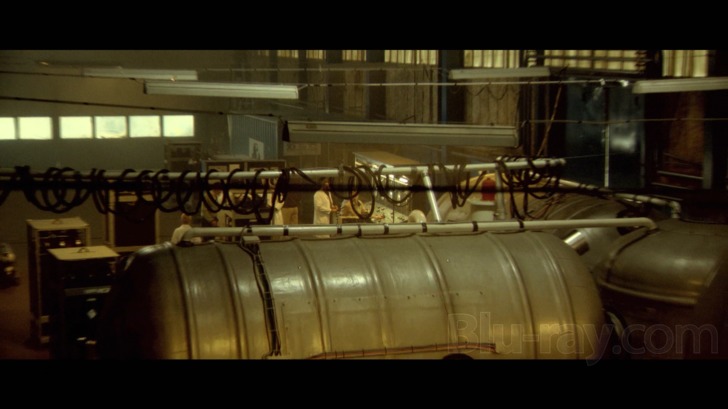
Pioneer's Swedish cinematographer, Jallo Faber, has gone on record stating his preference for film over digital, but Pioneer's underwater sequences made digital photography a practical necessity because film would have required frequent resurfacing to reload the camera. Still, due to the period setting, Faber chose vintage lenses, and even used such old-fashioned tricks as wrapping a sheer stocking around the lens, to give the image what Faber called an "organic" appearance, instead of the "perfect" look of the Arri Alexa. Although Faber and Skjoldbjærg consulted The Abyss for visual references, they found themselves more influenced by Ridley Scott's original Alien, which Faber has described as "truck drivers in space". (The conquest of the North Sea is considered Norway's "moon landing", and there's a reference to it in the film.) The image on Magnolia Home Entertainment's 1080p, AVC-encoded Blu-ray is striking in its effective reproduction of the otherworldly underwater environment, the grimy cargo ship that brings the divers to their location, the elaborately constructed testing facilities and assorted other environments where the film's action plays out. Even with Faber's "organic" adjustments, the image remains sharp and detailed, so that the massive sets built for the film can be appreciated in all their intricacy. Blacks are deep and solid, and the palette is generally neutral and understated, except for a few specific effects that are best left for the viewer to discover. I was surprised to find that Magnolia has mastered Pioneer with an average bitrate of only 18.00 Mbps, because the image looks so good and betrays only some occasional light banding at scene changes. Some of the peaks are much higher; so the compressionist has obviously done a careful job of allocation. (The Region B-locked Arrow release of Pioneer has been reported as having a higher average bitrate, probably because it contained no extras.)
Pioneer Blu-ray Movie, Audio Quality 
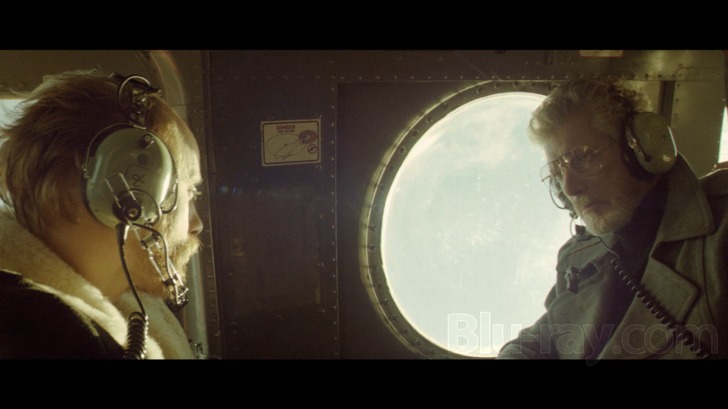
Underwater adventures have often provided creative possibilities for sound design, and Pioneer's sound mix, presented on Magnolia's Blu-ray in lossless DTS-HD MA 5.1, is no exception. The mix immerses the viewer into the underwater world with metallic creaks and groans, the hissing of air supplies, various equipment noises and the ever-present watery environment, the intense pressure of which is often conveyed by deep bass tones. Wind and waves are heard aboard ship, and a different set of sonic cues has been assembled for the pressure tanks and testing resources at the research facility. Several other key events that can't be identified without spoilers register sharply and forcefully. The English dialogue is clearly rendered, and I presume the Norwegian dialogue is equally so. (English subtitles are optional.) The electronic score by the French duo Air, which has scored several films for Sofia Coppola, contributes so much to Pioneer's edgy atmosphere that it blends seamlessly with the sound effects. According to Kjetil Lismoen of Air, their main reference was the films of Alan Pakula. (The Region B-locked Arrow release of Pioneer has a DTS-HD MA 7.1 track. I have not been able to determine whether this is the film's original mix or a remix.)
Pioneer Blu-ray Movie, Special Features and Extras 
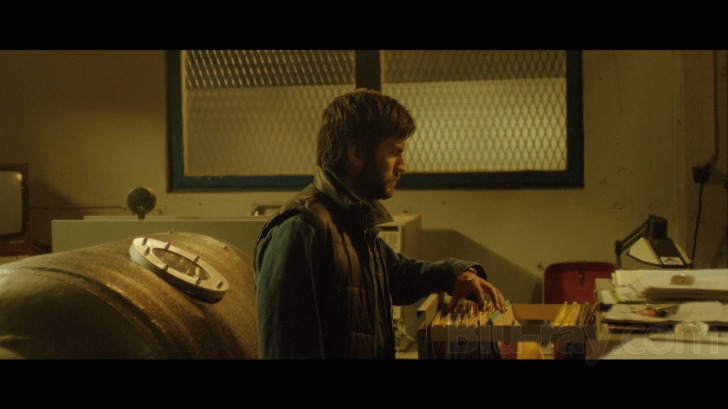
The Region B-locked Blu-ray of Pioneer released in August 2014 by Arrow had no special features. Magnolia's version contains an informative selection.
- Behind the Scenes Featurettes (1080p; 1.78:1; 27:21): This multi-part EPK provides a
close look at numerous aspects of the production through interviews with Skjoldbjærg,
producer Christian Fredrik Martin and star Aksel Hennie. Included is the incredible story
of how one stunt sequence went awry, resulting in footage that looks more realistic in the
film than anyone could have hoped but almost killed its star. In the final segment, Hennie
talks about his personal connection to the story. (Warning: None of this should be viewed
until after you have seen the film.)
A "play all" feature is included. The titles marked with an asterisk have been changed to
avoid potential spoilers.
- Reflecting on the Cast
- The Jeep*
- Locations & Production Design
- Diving
- The Incident*
- Making of Pioneer: A Dive into the Depths of the Sea (1080p; 1.78:1; 8:01): This short focuses on the Finnish team that had primary responsibility for Pioneer's underwater photography. They describe the specific location in Iceland where most of the dive sequences were filmed and the reasons why it was chosen.
- Working on Pioneer: Interviews with Stephanie Seligman "Maria" and Stephen Lang "Ferris" (1080p; 1.78:1; 6:32): As two key non-Norwegian cast members, Seligman and Lang discuss their involvement and the experience of working with the Norwegian cast and crew. Seligman in particular found her role demanding, because all of her dialogue was in Norwegian, which she does not speak.
- AXS TV: A Look at Pioneer (1080p; 2.39:1; 2:19): This typical AXS TV promo has been created by combining excerpts from the Lang and Seligman interviews with the film's theatrical trailer.
- Also from Magnolia Home Entertainment: The disc includes trailers for Serena, The Two Faces of January, Headhunters and Grand Piano, as well as promos for the Chideo web service and AXS TV. These also play at startup, where they can be skipped with the chapter forward button.
- BD-Live: As of this writing, attempting to access BD-Live gave the message "Check back later for updates".
Pioneer Blu-ray Movie, Overall Score and Recommendation 
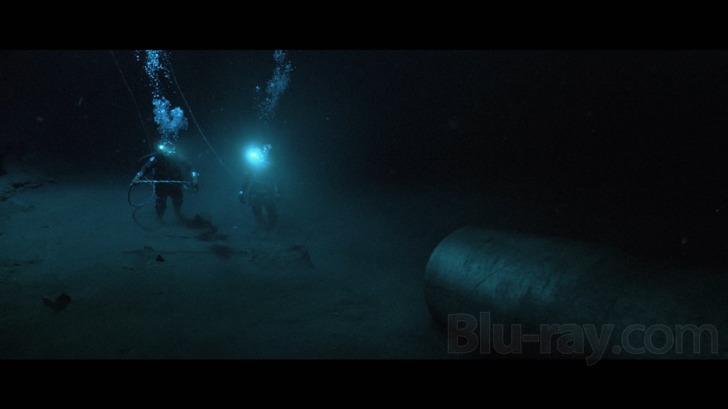
One of the recurring visual motifs in Pioneer is shots from overhead. This is not surprising in sequences underwater, but Skjoldbjærg frequently chose this perspective on land as well. He has explained that this is "because the film is about people at the bottom of the sea and at the bottom of the hierarchy". Here again, the director's roots in American thrillers of the Seventies is evident. It's the "little people" who often make the best protagonists. Once they have lost all their illusions that those in power are principled and benevolent, their psychic investment in the established order vanishes, and they begin to see things differently. That's when they have nothing to lose. That's when they become dangerous. Highly recommended.
Similar titles
Similar titles you might also like

Omar
2013

The Club
El Club
2015

Zama
2017

Goodbye to Language 3D
Adieu au langage
2014

36th Precinct
36 quai des Orfèvres
2004

Knife + Heart
Un couteau dans le cœur
2018

The Connection
La French
2014

Loveless
Нелюбовь / Nelyubov
2017

Beyond the Hills
După dealuri
2012

Graduation
Bacalaureat
2016

Diva
1981

Let the Corpses Tan
Laissez bronzer les cadavres
2017

Berberian Sound Studio
Slipcover in Original Pressing
2012

On the Job
2013

Bastards
Les Salauds / Slipcover in Original Pressing
2013

First Reformed
2017

The Parallax View
1974

Aquarius
2016

Leviathan
Левиафан / Leviafan
2014

Point Blank
À bout portant
2010